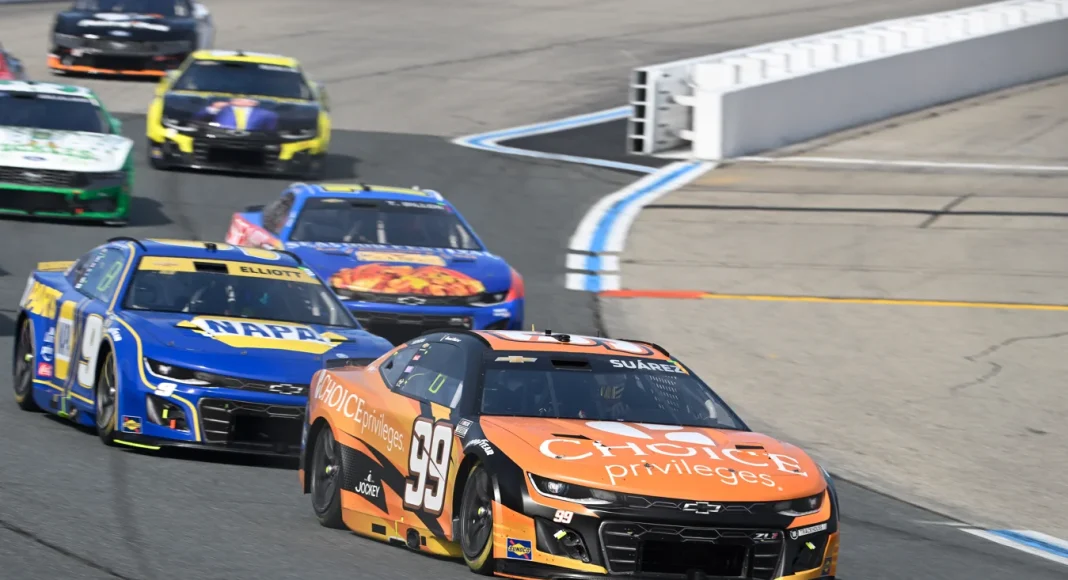Chase Elliott has endorsed NASCAR’s recent decision to increase horsepower for the 2026 season, emphasizing the significance of testing the change on the track before making final judgments. The Chase Elliott NASCAR horsepower decision has drawn attention across the sport, with Elliott and fellow competitors expressing their perspectives after NASCAR’s announcement.
NASCAR Implements Horsepower Increase for 2026
NASCAR revealed on October 8 that it would increase engine horsepower to 750 on road courses and select tracks under 1.5 miles, raising the limit from the current baseline of 670. The shift aims to invigorate competition, especially at venues that traditionally demand more power and dynamic racing. This announcement came after speculation among drivers such as Brad Keselowski, who previously indicated that the change might not have a significant on-track impact. Dale Earnhardt Jr. also shared skepticism, agreeing with Keselowski’s viewpoint about the magnitude of the change.
Chase Elliott, representing Hendrick Motorsports, shared his perspective on the adjustment during an interview with Frontstretch. He stressed the importance of experiencing the increased power in actual racing conditions, noting the ease of downplaying such measures before they’ve been thoroughly tested.
“I think it’s a good effort for sure. And I think until we give that a go, who knows? You know, I think it’s easy to sit here and say it’s not enough or, you know, it’s not this or it’s not that, but it’s something, right? It’s something and they’re trying. So I applaud them for, you know, for the effort and, you know, trying to keep the engine shops in mind.” – Chase Elliott, Driver
This change impacts tracks like Bowman Gray, where Elliott achieved his first victory of the season. The No. 9 driver has also celebrated recent wins at Echopark Speedway and Kansas Speedway, showcasing strong form ahead of the year’s critical playoff stages.
Elliott’s Performance and Playoff Implications
After securing victory in Kansas, Elliott earned a position in the Round of 8 in the NASCAR playoffs. The forthcoming penultimate round is set for Las Vegas Motor Speedway, where Hendrick Motorsports’ driver will start from the second row, positioned just behind Joe Gibbs Racing’s Christopher Bell, Chase Briscoe, and pole-sitter Denny Hamlin.
Reflections on Playoff Rivalry and Strategic Decisions
The recent playoff race at Charlotte Roval produced drama on the final lap, as Ross Chastain’s aggressive maneuver caused both him and Denny Hamlin to spin in the closing chicane. Hamlin later admitted that a lack of information about Chastain competing for the last transfer spot affected his decisions, as his team withheld this knowledge to avoid potential penalties related to race manipulation.
Elliott, when asked for his view on whether he’d want such updates about his rivals’ circumstances, shared his own approach to playoff strategy.
“I’m not going to sit there and, you know, only pay attention to them. I have enough going on my own. So, to me, it’s all about just trying to maximize the things that I can do, you know. You can worry about the situation too much,” he said via aforementioned source. [3:00 onwards] – Chase Elliott, Driver
He finished the Charlotte Roval elimination race in eighth place, and currently sits sixth in the playoff standings, trailing the cutline by 14 points as the competition intensifies. His mindset exemplifies the intense, individual focus required at this late playoff stage.
What the New Horsepower Decision Means for NASCAR
The Chase Elliott NASCAR horsepower decision has prompted notable attention throughout the motorsports community. Teams, manufacturers, and engine builders are examining how the increase to 750 horsepower may affect car performance, strategy, and parity among organizations like Hendrick Motorsports, Joe Gibbs Racing, and others.
For Elliott and his competitors, NASCAR’s willingness to test new power levels represents a step toward creating more competitive and unpredictable races, especially on short tracks and road courses. The coming seasons will reveal whether this policy shift delivers the excitement that fans and competitors are seeking, as the series strives to balance innovation, fairness, and the demands of top drivers and key organizations like Ross Chastain, Brad Keselowski, and Dale Earnhardt Jr.


